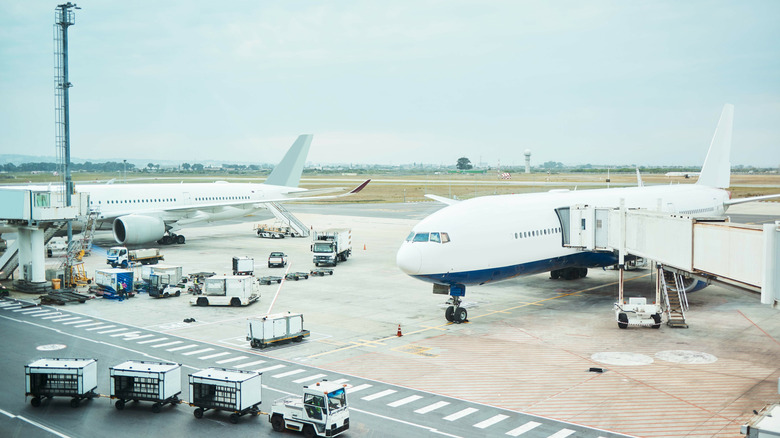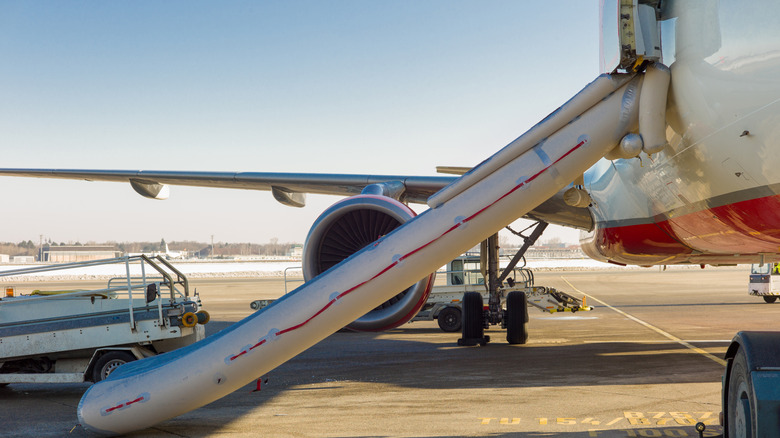Can A Plane's Emergency Slide Really Be Deployed By Accident?
One thing you don't want to see when on an aircraft is the emergency slide popping out of the side. Usually, it means something dangerous has happened, and you're evacuating the plane. But slide deployment doesn't always signal danger. Sometimes, you can be happily sitting on the tarmac when, whoosh — the giant inflatable suddenly makes an appearance. In fact, a plane's emergency slide can be deployed by accident fairly easily. According to Airbus, it happens 30 to 40 times per year. The issue even has its own abbreviation: ISD (inadvertent slide deployment).
So, how does an ISD happen? While traveling by plane, you might have heard "arm doors" announced before takeoff. (Check out this article to learn more about flight attendant code words!) If the door on an aircraft is armed, then the emergency slide will deploy when they're opened. On landing safely, the crew is instructed to disarm the doors, meaning that the emergency slide will not be deployed when the door is opened. That all sounds simple enough.
However, the method of arming and disarming doors varies by aircraft type. While Airbus doors usually require pushing or a pulling a lever, some Boeing doors have a two-step process. Arming and disarming doors isn't necessarily difficult, but mistakes happen. And when they do, out pops the slide. ISDs are often the result of cabin crew error, whether due to fatigue, time pressure, or the crew being distracted when opening the doors.
What happens if a slide is deployed accidentally?
Thankfully, few injuries are caused by ISDs, though the risk to those on and outside the plane shouldn't be underestimated. Getting the plane ready to go again takes time, and you definitely don't want to take off without one of the slides — they're the fastest way out in an emergency and double as life rafts if your plane makes an emergency landing on water. The slide is also one of the reasons flight attendants advise against wearing high heels on a plane. The ensuing delays have considerable financial implications. Airbus estimates that the minimum cost to the airline with a 90-minute delay is $11,000. If the flight is canceled and passengers have to be accommodated overnight, costs can hit as high as $200,000.
Let's look at three times an ISD has happened in recent years. In April 2024, a Delta Boeing plane accidentally deployed an emergency slide on top of a catering truck on the runway at London Gatwick. No one was hurt, but the plane suffered a three-hour delay while the issue was sorted out. More recently, in January 2025, a British Airways crew member inadvertently deployed an Airbus slide on the runway at London Heathrow, resulting in another three-hour delay. Two years earlier, at the same airport, a new flight attendant on their first trip popped a slide out while the plane was taxiing. (Despite the frequency of incidents, we don't think London is the issue!) Next time you're on the tarmac, keep your fingers crossed that the emergency slide stays in place unless it's truly needed.

